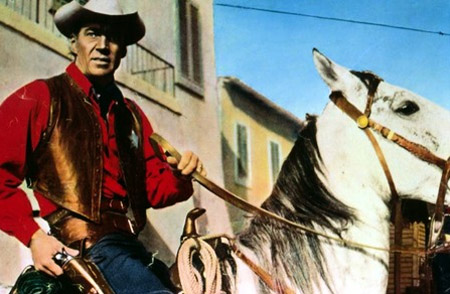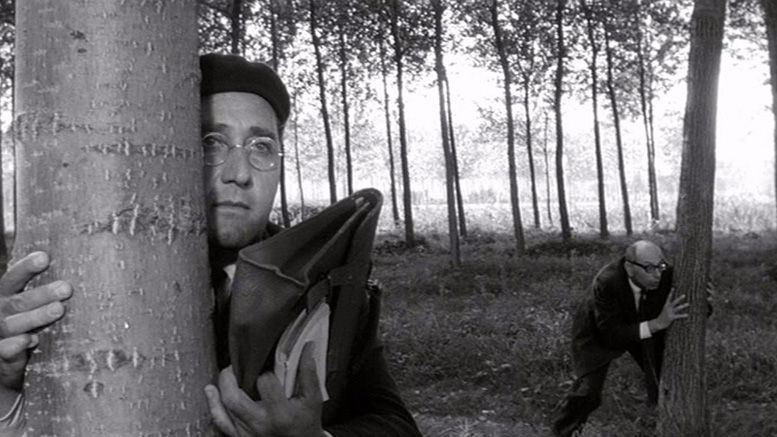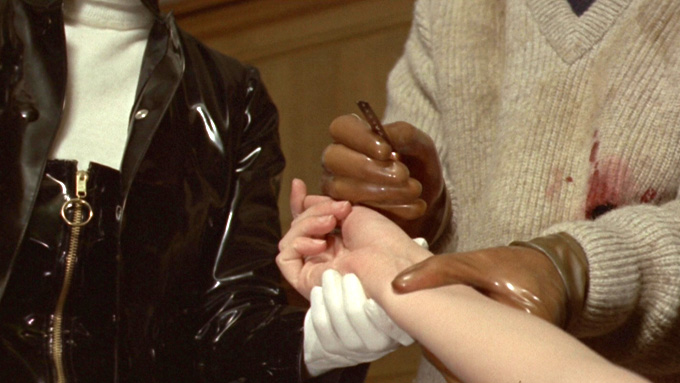
Year: 1966
Aka: 3 colpi di Winchester per Ringo
Length: 100 mins
Country: Italy
Produced by Francesco Mannocchi for Profilms
Distribution: Italian International
Director: Emimmo SalviStory: James Wilde Jr.
Screenplay: Emimmo Salvi, Ambrogio Molteni
Cinematography: Mario Parapetti
Music: Armando Sciascia
Editor: Cesare Bianchini
Art direction: Aldo Marini
Cast: Gordon Mitchell (Frank Sanders), Mickey Hargitay (Ringo Carson), Milla Sannoner (Jane Walcom), John Heston [Ivano Staccioli] (Daniels), Mike Moore [Amedeo Trilli] (Mr Walcom), Spean Convery [Spartaco Conversi] (Tom), Dante Maggio (Alonso), Margherita Horowitz (Mrs. Carson), Isarco Ravaioli, Nino Fuscagni, Bruno Arié (Sanders man)
By 1965, the peplum as a whole had already become over-familiar with audiences, not to mention seeming increasingly outdated in the modish new world, and as a result ticket sales were declining and profit margins dropping. Emimmo Salvi, like many of the filmmakers and producers who had previously worked in the genre, decided to switch his attention to a new format that was just approaching its peak of popularity: the spaghetti western. His first attempt in this field, Three Bullets for Ringo, is a somewhat peculiar affair. Lacking the cool cynicism that infused most films of the genre, it initially appears rather overwrought an old-fashioned. As it progresses, though, it actually becomes a lot more involving, not to mention showing many of the director’s trademark touches in a curiously different kind of environment.
Ringo Carson (Mickey Hargitay) and Frank Sanders (Gordon Mitchell), a pair of quick-on-the-draw gunmen, are hired by a certain Mr Walcom (Amedeo Trilli) to rescue his daughter, Jane (Milla Sannoner), who has been kidnapped by a gang of Mexican bandits. They succeed in this without too much trouble, but their partnership is irrevocably damaged when they both proceed to fall in love with her. While she’s all too happy to reciprocate the attentions of Ringo, she’s rather less pleased with Frank’s ardour, causing him to leave town in a strop.
Time passes. Ringo and Jane get married, he goes off to fight in the Civil War and returns to town as Sheriff, where he spends his time battling the outlaw groups that have been left behind after the amnesty. Things go wrong, though, when he’s blinded while trying to fend off a particularly nasty gang, and he only survives thanks to the fact that they’re headed up by Frank, who makes sure his old chum is returned home safely. Their former friendship, however, only counts for so much, and when the duplicitous town boss, Daniels (Ivano Staccioli), offers Frank the now vacant Sheriff’s job – knowing that he’ll be happy to turn a blind eye to any dodgy activity carried out in the territory if paid a suitable bribe – he’s happy to accept.
Needless to say, the place soon starts going to the dogs. A number of people sell up and leave town, and those that stay behind are subject to frequent harassment by Daniels and his men. It all comes to a head when Ringo – who has refused to relinquish his land – is beaten up and left for dead and his mother is murdered. However, this proves to be a bad move on the villains’ part: during the assault Ringo is hit on the head, causing him to regain his sight. Knowing it gives him an advantage, though, he decides to keep it secret, even from his wife, and begins planning his revenge.
Working with his regular co-writer, Ambrogio Molteni (Vulcan Son of Jupiter, The Seven Tasks of Ali Baba), Salvi has here come up with a variation on the ‘crippled protagonist’ narrative that was enduringly popular in the genre. Blindness, of course, had been a disability that featured in the notorious Blindman, but the protagonists of several other films (Vengeance) suffered a similar kind of temporary loss of sight, although more commonly through being staked out in the sun with their eyelids propped open rather than receiving a conk on the head.
Beyond that, though, it also has a rather bizarre structure: the introduction section, delineating Ringo and Frank’s friendship and break-up, lasts about 25 minutes, and it’s only really at that point that the main story really begins. It’s also notable that at this point the whole thing begins to feel less influenced by American westerns, and probably not a coincidence that the film, as a whole, becomes far more interesting as the running time progresses. Even so, there’s far more talking than is usual for the genre, and it all has a rather melodramatic feel; it’s closest equivalent being possibly the dark westerns made by Alfredo Cardone at around the same time, Seven Dollars on the Red and Blood at Sundown, both of which took traditionally melodramatic themes – family, fate, incapacity – and transplanted them into a western setting. And, once the first half hour or so is out of the way, Three Bullets for Ringo becomes a rather involving, effective example of its type, despite the obvious low budget.
Despite the switch in genre, this still feels very much like a Salvi film. Much of it looks to have been filmed in the same locations as his previous productions; presumably somewhere not to far from Rome, making it a cheaper, more convenient alternative to Almeria. And, despite the use of exteriors, a lot of it was still obviously filmed on the Cinecitta stagesets, several of which display a rather idiosyncratic style of art direction and are shot using green or red lighting, giving it a peculiar, gothic touch. In fact, the set design is strange even for the location work, with petrified tree stumps – which are totally out of place in the environment – appearing prominently in the camera framing. There’s the usual nightclub routine style dance sequence, a regular feature of Salvi films if not spaghetti westerns, and it’s all capped off with an extremely weird finale in which poor Jane is strung up by her wrists across the high street (rather like an unwilling Christmas decoration), while Frank and Ringo walk towards each other, trying not to trip over the numerous corpses littering the ground.
Throughout his career, Salvi also displayed a liking for exaggerated performances, and this is no different. Hargitay, who is rather dull when in traditional hero mode, suddenly leaps into life after his character is blinded, giving a similarly ‘committed’ performance to his turn in The Bloody Pit of Horror. Gordon Mitchell, appearing in his fourth Salvi film, was one of the few peplum stars who managed to have any success in Spaghetti Westerns, and he’s very watchable as a villain with a tiny bit of depth. Ivano Staccioli, a regular in second string genre productions, always seemed to end up with the roles that could well have been turned down by Gianni Rizzo and Franco Ressel; genteel psychopaths who end up getting their just desserts.


